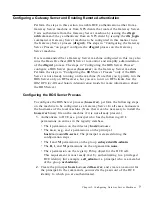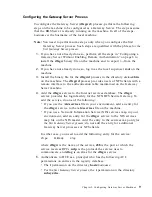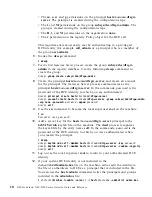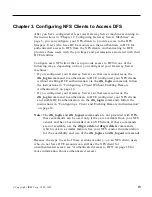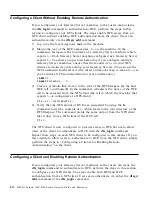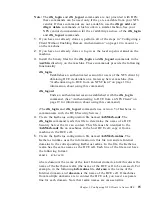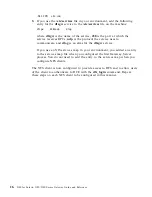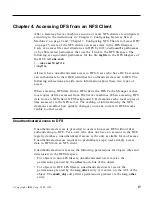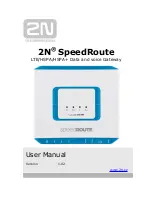
on the Gateway Server machines, installing the vendor-provided dfs_login
and dfs_logout commands on the NFS clients, configuring Kerberos on the
NFS clients, and configuring the remote authentication service on both the
Gateway Server machines and the NFS clients. However, authentication
requires no administrative measures, and user passwords are never sent in
the clear.
Note:
The dfs_login and dfs_logout commands are not provided with DFS;
these commands can be used only if they are available from your NFS
vendor and have been installed on an NFS client. If these commands
are not available, use the dfsgw add and dfsgw delete commands,
which work in a similar fashion. See your NFS vendor documentation
for the availability and use of the dfs_login and dfs_logout commands.
The dfsgw add and dfs_login commands both result in authenticated access
to DFS from an NFS client. To provide a user with authenticated access, each
command obtains a ticket-granting ticket (TGT) for the user from the DCE
Security Service. The TGT is used to create a valid login context for the user.
The login context includes a Process Activation Group (PAG), which DFS
stores in the kernel of the Gateway Server machine. The PAG identifies the
user’s TGT; the TGT serves as the user’s DCE credentials.
On the Gateway Server machine, an association is created between the UNIX
user identification number (UID) of the user and the network address of the
NFS client from which DFS access is desired. A mapping is then created
between this pair and the PAG created for the user. The mapping is stored as
an entry in a local authentication table, which, like the PAG, resides in the
kernel of the machine. The mapping provides the user with authenticated
access to DFS from the NFS client.
Each mapping grants a user authenticated access only from the specific NFS
client for which the mapping exists. For authenticated access from a different
NFS client, a user must use the dfsgw add or dfs_login command to create a
new mapping for that client.
A user’s DCE credentials are good only for the lifetime of the TGT. The ticket
lifetime is dictated by the registry database of the DCE cell. By default, each
ticket receives the default ticket lifetime in effect in the registry database. The
dfs_login
command includes a -l option that can be used to request a
different lifetime, but a requested lifetime is constrained by the policies in
effect in the registry database. A user’s DCE credentials can be refreshed by
using the dfsgw add command before the user’s TGT expires. If a user’s TGT
expires, the user must obtain new DCE credentials. For more information on
the dfsgw add command, see “Chapter 5. Configuration File and Command
Reference” on page 25.
2
DFS for Solaris: NFS/DFS Secure Gateway Guide and Reference
Содержание NFS/DFS Secure Gateway
Страница 1: ...DFS for Solaris NFS DFS Secure Gateway Guide and Reference V ersion 3 1 GC09 3993 00...
Страница 2: ......
Страница 3: ...DFS for Solaris NFS DFS Secure Gateway Guide and Reference V ersion 3 1 GC09 3993 00...
Страница 6: ...iv DFS for Solaris NFS DFS Secure Gateway Guide and Reference...
Страница 10: ...viii DFS for Solaris NFS DFS Secure Gateway Guide and Reference...
Страница 14: ...4 DFS for Solaris NFS DFS Secure Gateway Guide and Reference...
Страница 22: ...12 DFS for Solaris NFS DFS Secure Gateway Guide and Reference...
Страница 34: ...24 DFS for Solaris NFS DFS Secure Gateway Guide and Reference...
Страница 44: ...Related Information Commands dfsgw help 8dfs 34 DFS for Solaris NFS DFS Secure Gateway Guide and Reference...
Страница 51: ...dfsgw_delete 8dfs dfsgw_query 8dfs Chapter 5 Configuration File and Command Reference 41...
Страница 58: ...48 DFS for Solaris NFS DFS Secure Gateway Guide and Reference...
Страница 65: ......
Страница 67: ...Spine information DFS for Solaris NFS DFS Secure Gateway Guide and Reference Version 3 1 GC09 3993 00...

















